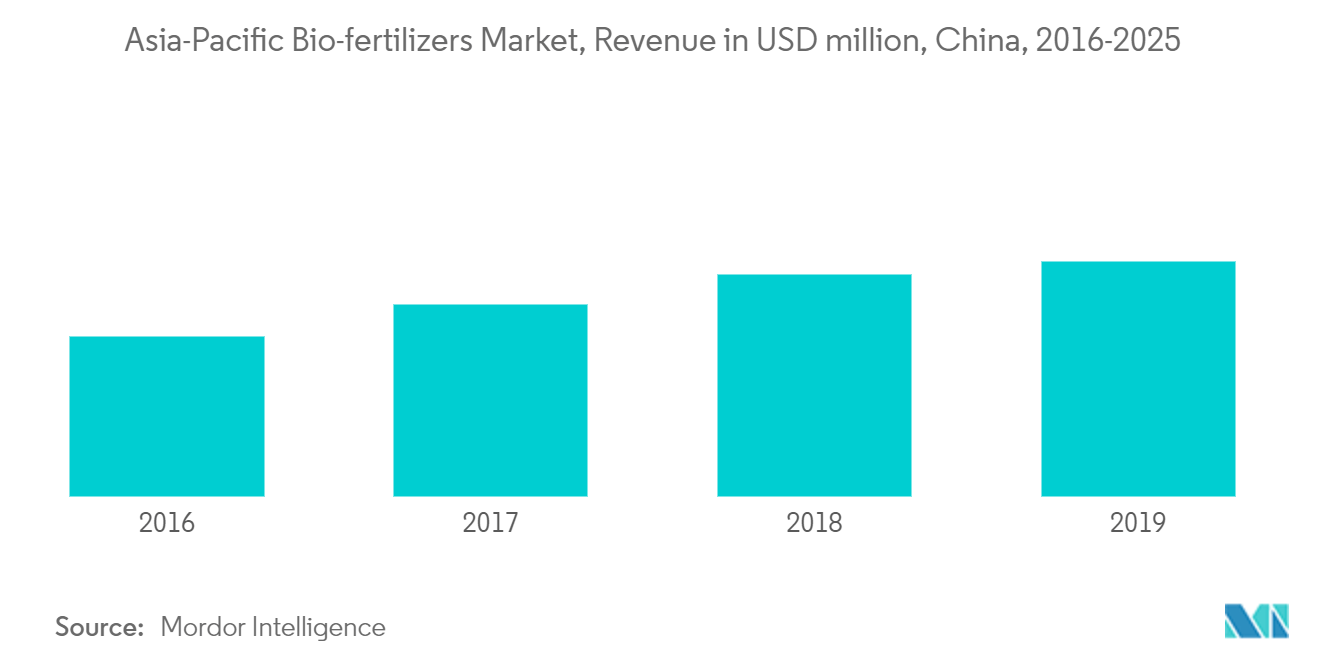Market Trends of Asia-Pacific Biofertilizers Industry
The Practice of Organic Farming Increased
According to the FiBL report 2018, the leading countries by area were China (3 million hectares) and India (1.8 million hectares) in 2017. The countries in the region are providing subsidies and other financial assistance to farmers to promote organic farming in the respective countries.
For instance, Government of India is promoting biofertilizers through various schemes of National Mission for Sustainable Agriculture (NMSA)/ Paramparagat Krishi Vikas Yojana (PKVY), Rashtriya Krishi Vikas Yojana (RKVY), and National Mission on Oilseeds and Oil Palm (NMOOP), National Food Security Mission (NFSM), and Indian Council of Agricultural Sciences (ICAR).
Additionally, the rise in demand for organic products is booming due to an increase in conscientious consumers, increasing incomes, and improved farming practices that make organic yields more robust. Thus, the increasing demand for organic food has increased the area under organic farming, which is expected to boost the biofertilizer market in the region.

China is Expected to Dominate the Asia-Pacific Biofertilizer Market
Asia-Pacific is majorly influenced by the Chinese market, with the Chinese biofertilizer market projected to register a CAGR of 10.1% during the forecast period. The Chinese economy is moving toward a green agricultural practice by encouraging farmers to scale back the use of chemical fertilizers and switch to bio-based and organic alternatives.
In 2017, China's Ministry of Agriculture released a pilot plan for fertilizer replacement in around 100 districts of China, which aimed at reducing the chemical use of fertilizers by at least 20% by 2020. At present, the number of microbial fertilizer producers has been growing every year. Some larger fertilizer manufacturers have also stepped into the industry. China has over 300 biofertilizer-producing enterprises with an annual product output of about half a million metric tons.


